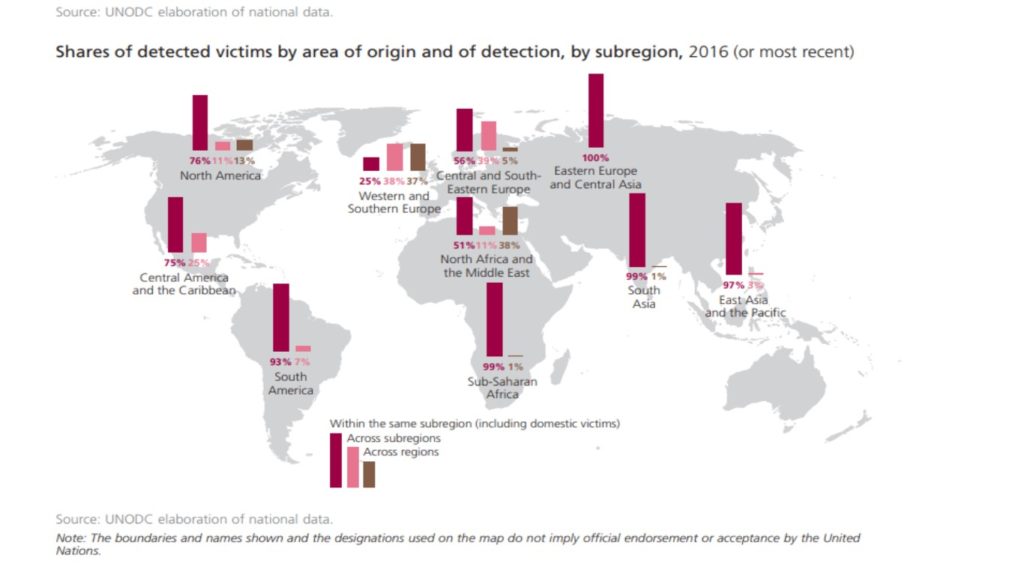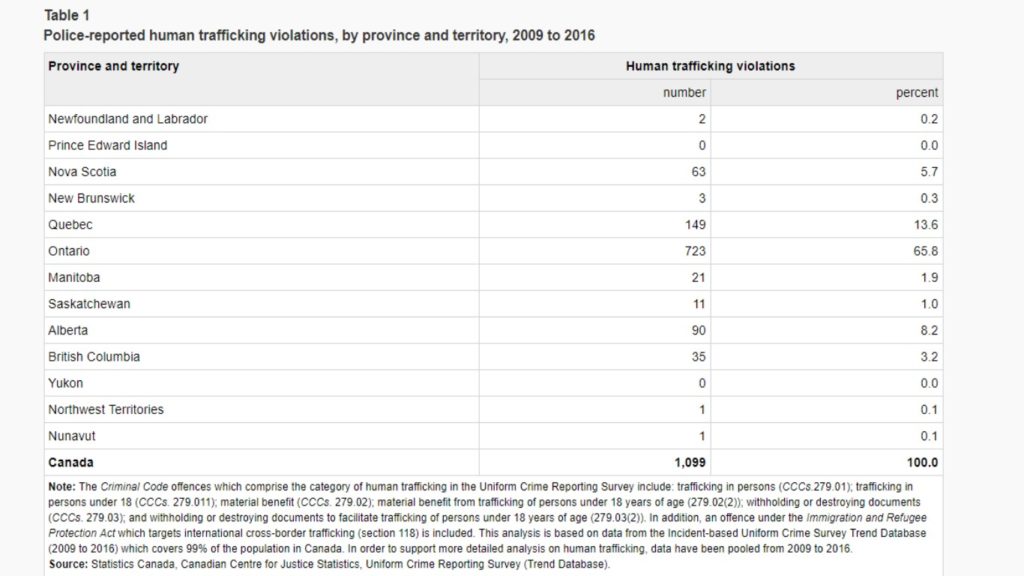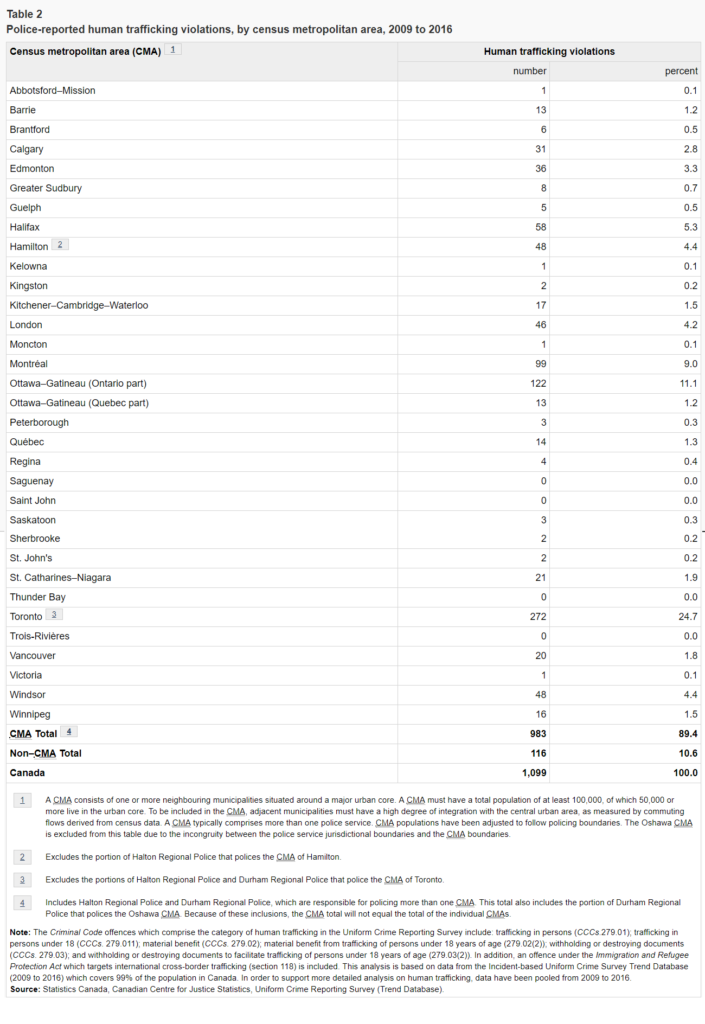Human Trafficking – A quick profile into where and how much it happens
Just recently in June 2019, the Toronto Star published an article profiling the experience of a recent victim of sex trafficking. The woman, a student at the University of Toronto, was coerced into a trafficking ring through 2 men, both of which “…had attended the same school and were involved in the local rap video scene.”
This is the new face of sex trafficking today. The players can still be part of organized crime groups and gangs, or military organizations in developing parts of the world. Increasingly, they can be ordinary individuals with a strong incentive to earn fast money by any means possible.
Human trafficking can be found in tiny nation states such as Aruba, where recent attention has been paid to instances of sex trafficking in its prostitution and escort services, domestic home services, and among individuals who emigrated to the Netherlands for job and education prospects. Between 2009 and 2012, Aruba officially recorded 10 instances of human trafficking within its borders (pg.45).
Human trafficking has also been gaining greater attention in Africa, as a perfect storm of factors has combined to put entire sub-populations at risk of being trafficked. An African government agency recently uncovered findings of sex and labour trafficking of Nigerian girls in Mali, where girls and young women were tricked, coerced or recruited by Malian authorities, mining corporations, criminal rings or para-military organizations to service Malian miners.
Advancements in research, reporting, law enforcement and policy have revealed a problem that is both increasingly global and local in nature.
Human Trafficking: The International Dimension
The first level of human trafficking is the international level. International human trafficking is where victims are trafficked across international borders to be exploited in another country.
The United Nations Office on Drugs and Crime (UNODC) notes that wealthy countries tend to be common destinations for detected victims who are trafficked from more distant source countries, and the ethnic makeup of trafficked victims to wealthy countries tends to be more diverse.
For example, countries in the Middle East, Western and Southern Europe have all recorded significant proportions of human trafficking victims from foreign jurisdictions among their detected trafficked populations (pg.9).
In other words, the majority of international human trafficking victims are moved to wealthy countries for exploitation.
Human Trafficking: The National Dimension
Surprisingly, internationally human trafficked victims do not comprise the majority of global human trafficking population. UNODC notes that ” …the data show that victims who have been detected within their own national borders now represent the largest part of the victims detected worldwide” (pg.13).
The second level of human trafficking is the national level, or domestic human trafficking.
This is where human trafficking victims are recruited, transferred and exploited within a nation’s borders. Domestic trafficking victims can be recruited in one part of the country and then exploited across multiple regions.

In other scenarios, victims can be forced to provide services in a specific geographic area, moving from hotel to hotel, or from home to home.
Typically, domestic human trafficking involves the exploitation of individuals who are also born within the borders of that country. For example, in Canada, the majority of domestic human trafficking victims come from First Nations communities, or smaller cities and towns where rates of poverty, crime, broken families, addiction and abuse are higher.

Human Trafficking: The Local Dimension
Where domestic human trafficking is reported at the national level, it is felt at the local level. This encompasses the communities that create both the vulnerable populations and the traffickers that exploit them, the venues and locations used to facilitate human trafficking, such as motels, hotels, massage parlours or houses, and the local community agencies, services and law enforcement that must work together to help local victims while stopping local traffickers.
This is the local dimension of human trafficking.

In contrast to international and domestic human trafficking analysis, which often focuses on trends – how many people are being trafficked, the demographics of victims and traffickers, convictions and police-reported cases – local human trafficking is about responding to the needs of the community that contribute to instances of human trafficking.
Governments will provide funding for more law enforcement, victim services, educational and awareness initiatives and job training for local communities to help victims and at-risk populations.
Actions to address the issue are often felt most at the local level, since it is here where victims can be directly helped, traffickers can be directly identified and convicted, and prevention programs can have a tangible effect on the attitudes and perceptions of potential victims, buyers and communities in which individuals live and work.
It is the combination of local interventions across multiple communities that ultimately impacts national and even international human trafficking trends. Individuals who are looking to get involved in the fight to end human trafficking are encouraged to join local organizations or initiatives that do such work.

